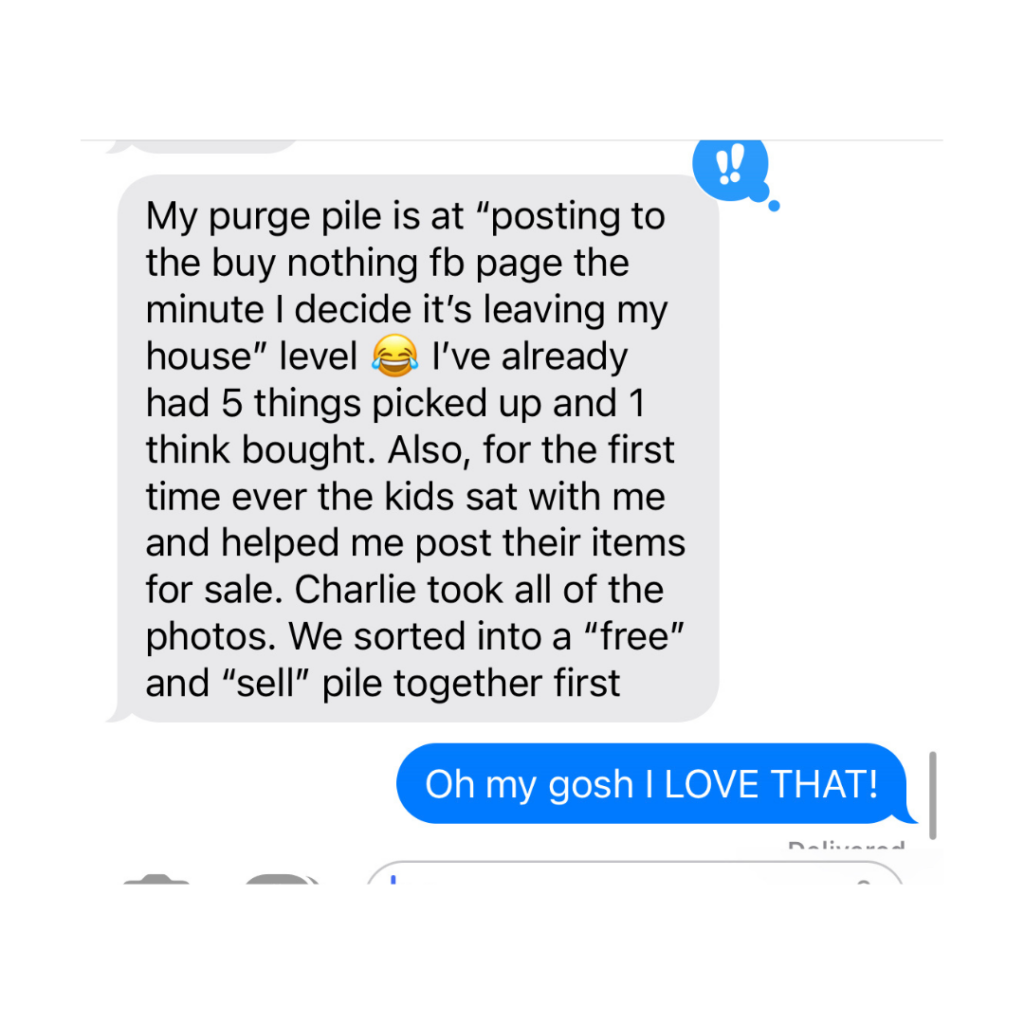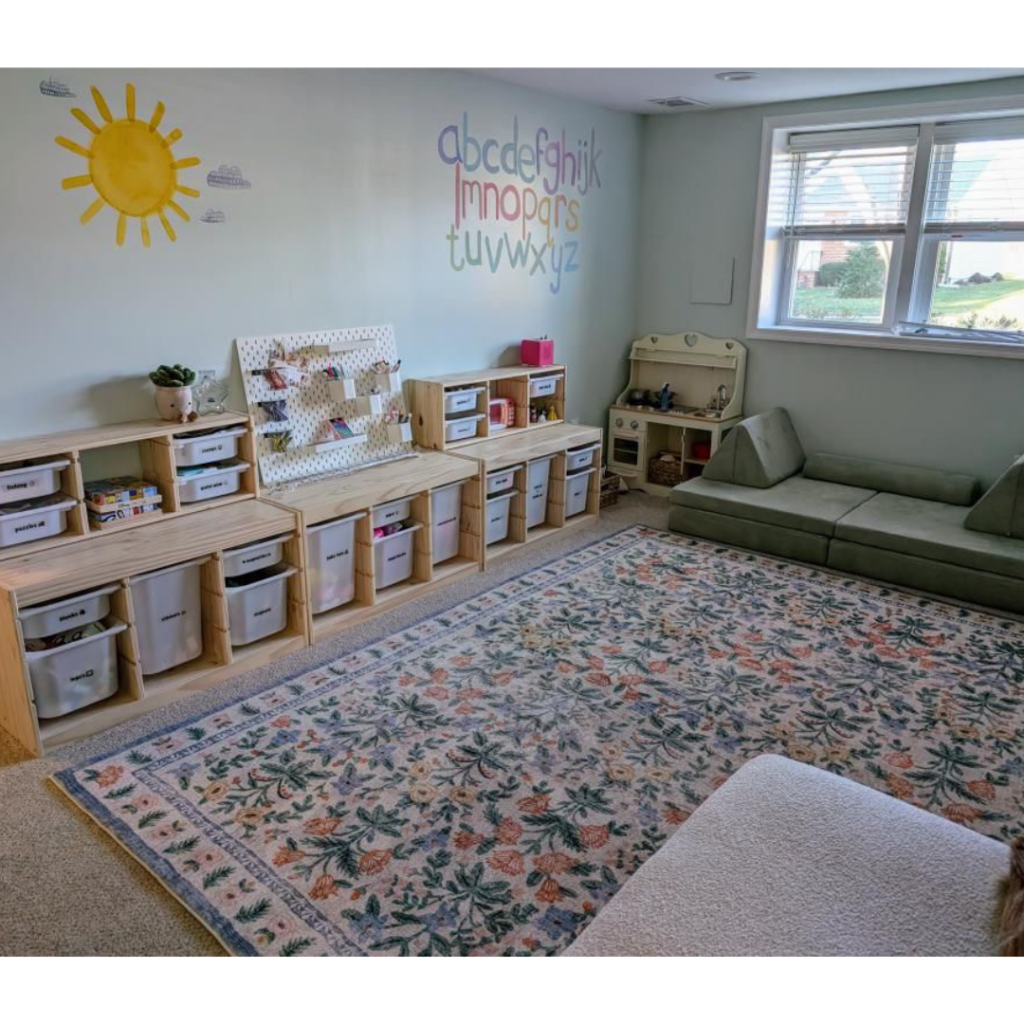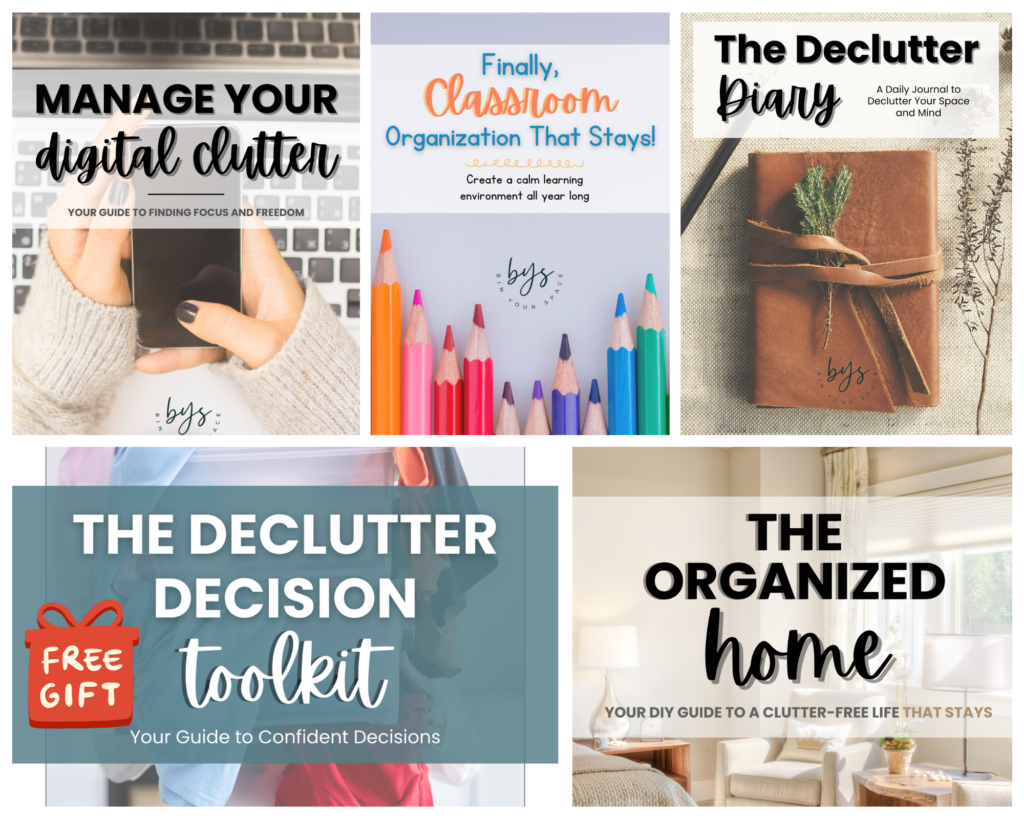Let’s be real: decluttering isn’t an innate skill. It’s a muscle we build over time. And just like any skill, teaching kids how to declutter requires patience and a structured approach. As a former teacher, I’ve found the gradual release method to be incredibly effective for learning new skills, and it works wonders for decluttering with kids too!
How to Declutter with Kids: The Gradual Release Approach
Think of it like this: First, I show you how it’s done (modeling). Then, we do it together (guiding). Finally, you do it on your own with my support (independent practice). This is exactly how to teach kids to declutter their belongings.
Kids accumulate a lot of stuff – gifts, treats, souvenirs, you name it! Just like we make decisions about our own belongings, we need to teach them to do the same. Decluttering their things for them misses a crucial learning opportunity. It teaches them that items magically disappear without any consequences for accumulating too much.
Instead, let’s empower them with the skills to make their own choices. The gradual release approach makes this process manageable and effective.

Step 1. Be the Model: Show Them How Decluttering Works
When it comes to figuring out how to declutter with kids, actions speak louder than words. Include your children in your own decluttering process, even if it’s just for a few minutes. Think aloud as you sort through your clothes or other items, explaining your thought process.
For example, you could say:
- “I love this dress! It makes me feel so good, so I’m definitely keeping it!”
- “These jeans used to be my favorite. I just don’t wear them anymore, and they are taking up so much space. I think it’s time to let someone else be able to use them.”
Adjust your language to your child’s age, but don’t shy away from explaining your decision-making. Simply observing you will teach them decluttering is a normal part of life.
Step 2. Be the Guide: Practice Decluttering Together
Next, guide your child through their own decluttering experience. Choose a time when you can offer support and guidance as they sort through their clothes or toys. Do this shortly after modeling the process so they can easily recall your examples.
Refer back to your own decluttering decisions: “Do you remember when I wasn’t sure if I wanted to keep the blue shirt?” These examples are powerful tools for starting the process of decluttering with your kids and building that momentum over time.
Step 3. Be the Support: Encourage Independent Decluttering
As your children practice and witness your decluttering habits, they’ll begin making decisions independently. This is a huge win! Remember, this takes time and patience.
When they choose to let go of something, celebrate their decision. Avoid questioning their choices, even if it’s a gift you gave them. Praise their ability to recognize what serves them and what doesn’t. This is crucial for successful decluttering with your kids.

When Decluttering with Kids Feels Like a Battle: Three Tips
Sometimes, even with the best approach, kids push back. That’s normal! Here are three tips for turning “no” into “let’s go!”
1. Lead by Example, Always
First and foremost, never force your child to declutter. Instead, double down on being the model. Even in the face of stubbornness, continue your own decluttering process and think aloud. Show them that decluttering is a normal, positive activity. If they see you doing it, they’ll be more likely to join in eventually.
2. Check Your Own Decluttering Vibe
Are you excited about decluttering? Kids are incredibly perceptive. If you’re dreading it, they’ll pick up on that. Show genuine enthusiasm for the process, and they’ll be more inclined to follow your lead. Remember, your attitude is contagious!
3. Make Decluttering with Kids a Fun Adventure!
Decluttering doesn’t have to be a chore! Turn it into a fun game or activity. Let them choose the music, set a timer for short sprints, and get creative! Put a basketball hoop above the donate box and let them toss items in. The more playful you make it, the more likely they are to participate.
Decluttering with Kids: Find Your Inspiration & Support!
Ready to create a calmer, more manageable space for your family? I’m passionate about helping families declutter and organize because I’ve seen firsthand how it positively impacts every aspect of life.
Let’s get you unstuck, reduce overwhelm, and boost productivity – and it all starts with decluttering with kids. Here’s how we can work together:
- Podcast Power
Dive into the ‘Declutter Diaries’ podcast! 🎧 Hosted by myself and licensed therapist Tina Wolff, we explore the powerful connection between decluttering and mental well-being. Find us on Apple Podcasts or Spotify!
- Kid-Friendly Organization on Amazon
Simplify kid spaces with my curated Amazon Store, Bin Your Space! Find room-by-room organizing containers and recommendations specifically for nurseries, bathrooms, and bedrooms.
- Professional Organizing
Got questions or decluttering wins to share? Drop them in the comments below! I’m here to help you create a space you love. You can also visit my website www.binyourspace.com to learn more about my in-person and virtual organizing services.
It’s time to bin your space!

View all my guides at https://binyourspace.etsy.com/
Bonnie Hintenach | Bin Your Space
Professional Organizer for Homes & Classrooms
Maryland Professional Organizer
